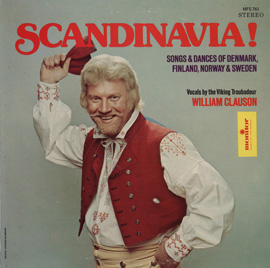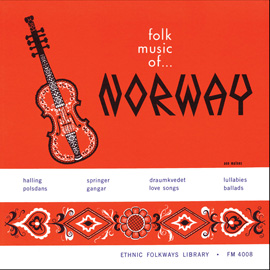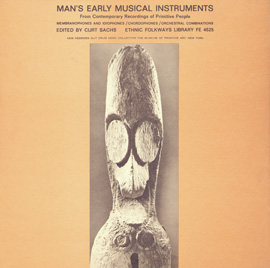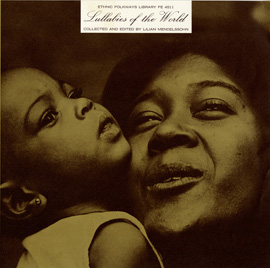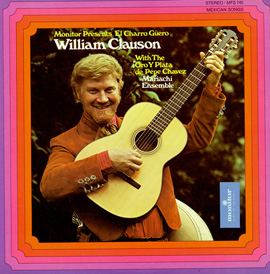Summary
Experience Norwegian folk music through a journey north to the land of the fjords and Hardanger fiddles. Students will have an opportunity to listen, discuss, and play Norwegian folk songs.
Suggested Grade Levels: 6-8, Orchestra: Beginner, Intermediate, or Advanced
Country: Norway
Region: Europe
Culture Group: Norwegian
Genre: Hardanger Fiddle Music
Instruments: Orchestra Instruments (Violin, Viola, Cello, Bass), Body Percussion
Language: Norwegian
Co-Curricular Areas:
Geography, Social Studies
National Standards: 1, 2, 3, 5,6, 7, 8, 9
Prerequisites:
- Basic note reading
- Knowledge of first finger position and second finger position onthe D string
- Fundamental instrument playing skills
- It would also be helpful to prepare a geography/social studies lesson on Norway to introduce students to important facts and information about Norway (this would also be an appropriate time to discuss the cultural elementsand traditions of Norway)
Objectives:
- Listen to, analyze, and discuss a variety of folk songs from Norway
- Play and perform a folk song from Norway
- Read notation of a folk song from Norway
- Adapt and play a folk song from Norway
- Improvise a drone accompaniment and add ornamentation to the melody of a Norwegian folk song
- Become familiar with folk music from Norway
Material:
- Recording of “Per Spelmann” from Scandinavia!: Songs and Dances of Denmark, Finland, Norway and Sweden.
- Recording of “Per Spelmann” from Scandinavian Folk Songs of Sweden, Norway and Finland.
- Recording of “Per Spelmann” from Norwegian Folk Songs.
- Recording of “Springar- Dance” from Smithsonian Folkways Songs and Dances of Norway album
- Recording of “Chordophones: Hardanger Fiddle” from Smithsonian Folkways Man’s Early Musical Instruments album
- Recording of “Myllargutens” from Smithsonian Folkways Songs and Dances of Norway album.
- Recording of “Sulla Lulla” from the Lullabies of the World album.
- Audio technology to play recordings in the classroom
- Reproductions of materials for students (song lyrics and translation for “Per Spelmann”, parts for “Sulla Lulla”)
- Instruments used for orchestra class
- Technology to show images of the Hardanger fiddle
Lesson Segment :
- “Per Spelmann: Peter the Fiddler” Compare Different Versions of a Norwegian Folk Song (National Standards 1, 6, 7, 8, 9)
- Hardingfele: Norwegian Fiddle (National Standards 6, 9)
- “Sulla Lulla”: Playing a Norwegian Lullaby (National Standards 2, 3, 5, 6, 7, 9)
1. “Per Spelmann: Peter the Fiddler”: Compare Different Versions of a Norwegian Folk Song

“Per Spelman (Per the Fiddler)”
from Scandinavia!: Songs and Dances of Denmark, Finland, Norway and Sweden (1974) | MON71761
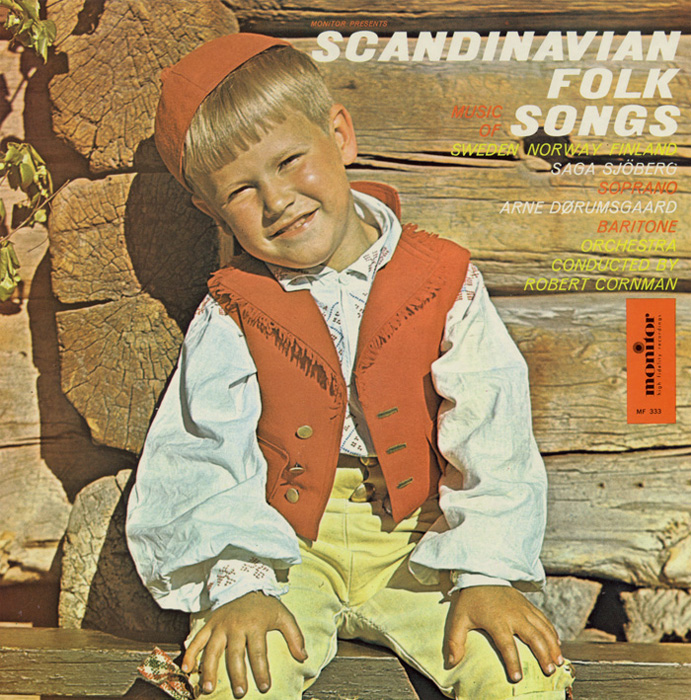
“Per Spelman (Per the Fiddler)”
from Scandinavian Folk Songs of Sweden, Norway and Finland | MON00333
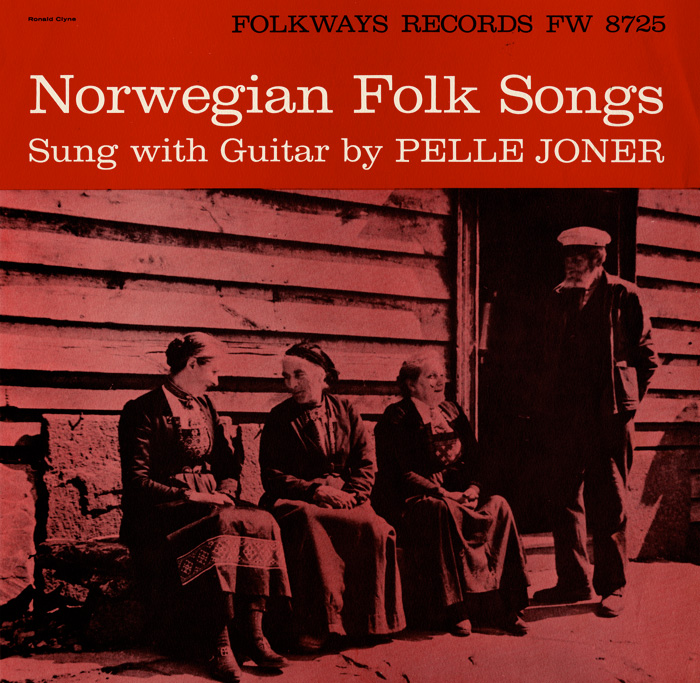
“Per Spelman (Per the Fiddler)”
from Norwegian Folk Songs (1958)| FW08725

“Springar - Dance”
from Songs and Dances of Norway (1954)| FW04008
“The Myllargutens - Miller Boy's Wedding March”
- Play two (or three) different recordings of the same song. Listen to each recording two or three times.
- Introduce each song with guiding questions such as:
- What instruments or voices do you hear?
- What meter do you think the song is in?
- What might be the form of the song, if there is a form?
- After each listening, add additional guiding questions and enactive listening strategies such as:
- Tap or clap the pulse
- Conduct the appropriate pattern
- Hum or sing the melody
- Tap the strong beats with a foot and tap the weak beats with fingers
- Play the beat on percussive instruments
- Divide the class into two groups: on percussive instruments, have one group play the strong beats and another group play the weak beats
- Optional: Give students a copy of the text of “Per Spelmann”.
- Discuss the lyrics
- Discuss the way the lyrics are used differently in each song
- Which song may have the best depiction of the lyrics? Is instrumentation important for this?
Lyrics from the Smithsonian Folkways Norwegian Folk Songs album liner notes:

- Play recording of “Per Spelmann” from Scandinavia!: Songs and Dances of Denmark, Finland, Norway and Sweden.
- Play recording of “Per Spelmann” from Scandinavian Folk Songs of Sweden, Norway and Finland.
- Play recording of “Per Spelmann” from Norwegian Folk Songs.
- Discuss the recordings and their differences by using guiding questions such as:
- What are the differences between the two (or three) recordings?
- How are the two (or three) recordings similar?
- Why do you think there are differences between the two (or three) recordings?
- Is it all right that there are these differences?
- How is this typical or not typical of folk music? Is this a way of defining folk music?
- What are other ways the same song can have a different version? (Same music but different lyrics such as Twinkle, Twinkle Little Star, the Alphabet Song, and Baa Baa Black Sheep)
- What songs do you know that might have multiple versions?
- What and where have you had experiences with different versions of the same song?
Extension:
Have students try to play the melody for “Per Spelmann” by ear.
Assessment:
Are the students able to identify the various instruments playing on the recordings? Are the students able to identify the meter and form of the pieces? Are the students able to compare and contrast the different recordings?
2. Hardingfele: Norwegian Fiddle

“Chordophones: Hardangerfele”
from Man's Early Musical Instruments (1956)| FW04525
- Play recordings of a folk song being played on the Hardanger Fiddle.
- Ask students to describe what kind instrument they hear and how it might look
- Play the track “Springar- Dance” from Smithsonian Folkways Songs and Dances of Norway album
- Play the track “Chordophones: Hardanger Fiddle” from Smithsonian Folkways Man’s Early Musical Instruments album
- Use the image from the Smithsonian Folkways Soundscape: Strings of the North to show a Hardanger fiddle (it is image number 2).

- Describe the Hardanger Fiddle using the description from the Songs and Dances of Norway album.

- Discuss the sound of the Hardanger fiddle. Compare it to other string instruments
- Discuss the ornamentation and style used by Hardanger fiddle players. Compare it to the ornamentation and style used by other fiddling styles (American, Irish, etc.)
- Discuss what kind of techniques the students may be hearing as someone plays the Hardanger fiddle (double stop, pizzicato, etc.)
Extension:
Assign the students to design and draw a picture of their own Hardanger fiddle.
Assessment:
Play recordings of different string instruments and have students identify their own instrument as well as the Hardanger fiddle.
3. “Sulla Lulla”: Playing a Norwegian Lullaby

“Norway: Sulla lulla”
from Lullabies of the World (1963)| FW04511
- Explain that you will be playing a lullaby from Norway.
- To use the music as a sight reading exercise, pass out copies of the music to the students. If not using the song for sight-reading, skip to step h.
- Parts are included for each instrument:

- Review fingerings for F natural (low 2 for violins and violas, 2 for cellos and bass) using the D minor scale
- Review sight-reading procedures
- Sight-read “Sulla Lulla”
- Play again to correct mistakes
- Continue to practice to use the song for performance or playing test
- Listen to the recording of the song “Sulla Lulla” from the Lullabies of the World album.
- Discuss what is heard and observed in the recording
- Discuss the form of the song.
- A A B A’ or A A B C
- Continue to practice the song.
Extension:
For more advanced students or additional ideas:
- Instead of passing out the music for the students, have the student learn the song aurally first by having the teacher play the melody transcription
- Discuss the differences in the recording and transcription found in phrase.
- Discuss why these differences occur
- Discuss what the students can to do perform the song more like the original.
- Try playing the song using the student suggestions
- Try playing the song starting on a different string or transposing it to a different minor key.
- “Hardangerize” your orchestra instruments.
- Tune all G strings to A to create a string that will vibrate sympathetically
- Have some students play open D and A strings on quarter notes as accompaniment drone to imitate the sympathetic strings of a Hardanger fiddle, or have students improvise a drone accompaniment
- Add Hardanger style ornaments to “Sulla Lulla”
Assessment:
“Sulla Lulla” could be used as a playing test to check how well students are doing with using the fingering pattern required to play F natural.
Additional Lesson Ideas:
- Listen to recordings of songs used for Halling dancing and have students try Halling dancing.
- Listen to recordings of songs used for Springar dancing and have students try Springar dancing.
- Listen to recordings of songs used for Gangar dancing and have students try Gangar dancing.
- Have students research information about Norway and design a postcard to “send” to the class about Norway.
- Students can work alone or in small groups. Have the students create the postcards on 5x8 cards and supply markers and pencils and pre-printed packets of information on the country or access to a book or computer where they can look up information.
- The front of the postcard needs to contain pictures that remind the class of the things learned about the country. Students can print out pictures or draw the pictures that go on the front. The back (written) portion needs to contain information such as, "In orchestra we played a song called “Sulla Lulla”. It is a song from Norway. Norway is a country in northern Europe where the main language is Norwegian. In Norway the main industries include agriculture and fishing. Fjords are significant geographical features in Norway. A fjord is a valley carved by glacial melting,” etc. Students should also include cultural (food, dance, music, costume, arts) elements on the postcards.
- Students should sign their names on the back and list information about which class they are in. This takes the place of where the name and address for a typical postcard recipient goes.
- When students are done with their postcards, have them present the postcard to the rest of the class by reading the back, telling about the front, and pointing to the country on a world map.
- The postcards can be displayed in the classroom.
Additional Resources
Smithsonian Folkways Soundscapes: Strings of the North
Suggested Video:
Search for online videos of Hardanger fiddle playing
Search for online videos of Halling, Springar, and Gangar dancing
Suggested Books:
Weber, Beth A. (1998).Folk Dance Music of Norway: 32 Traditional
Tunes Arranged for 1-3 Violins. Erda Music Books.




